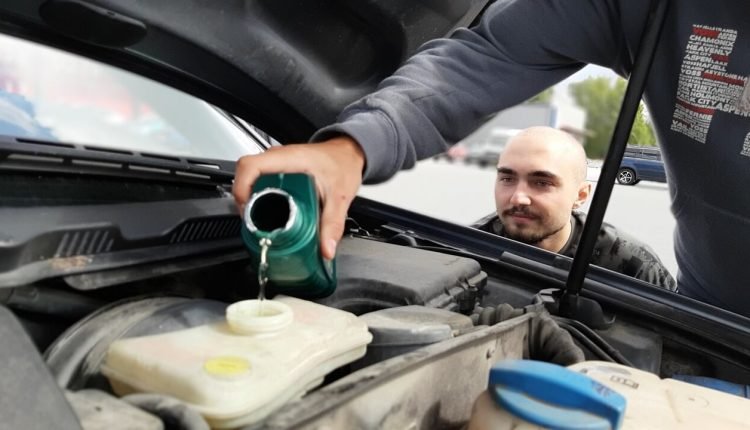This article is meant to give you a sense of what you need to do to ensure your brake fluid is in good shape and will allow your car to stop safely, as well as a basic understanding of how brake fluid works. A few aspects of brake fluid where knowing more about it can help you understand what to do and what not to do when authorising repairs or working on the car yourself.
No general article like this will provide you with enough information to work on your vehicle safely. Before you take any risks, especially when you’re buying a second hand car, make sure you consult the appropriate material for your car or a professional. Please continue reading to get a high-level overview of how brake fluid works and what it entails.
The Fundamentals: What You Must Do To Stay Safe
Here’s what you need to know. To begin with, your brakes do not function without brake fluid. It’s called a hydraulic system. Brake pressure forces fluid into your brakes, causing the pads to adhere to the rotor (these are called disc brakes because the rotor looks like a disc). The rotors are attached to the hubs of the wheels and spin as the wheel turns.
The car slows down as the pressure increases. There is no fluid and no pressure. You have an emergency brake (also known as a parking brake), but it is frequently insufficient to bring the car to a complete stop in an emergency. So it’s a big deal if you or your mechanic notice a brake fluid leak. It would help if you fixed it right away.You should not drive it until it has been repaired.
Boiling Point
Even if there are no leaks, you could still have problems. Brake fluid degrades over time. It absorbs water from the air, causing gunk to form in the form of rust. In addition, water has a much lower boiling point than fluid. If you apply a lot of force to the brakes, the water in the lines carrying the fluid to the brake components may boil. If this occurs, you may lose your brakes.The pedal may flop to the floor, and the car will not stop.
The interval between fluid changes varies, but every other year is a good rule of thumb. When you get your oil changed, request a brake fluid change after the appropriate amount of time has passed. If you have a standard braking system, it is usually not expensive.
Finally, only use fluid from a new container when topping off a low brake fluid reservoir. Almost immediately, fluid begins to “go bad.” Fortunately, common fluids are inexpensive. Purchase only what you will use within the next few months. In an unopened container, fluid lasts about two years Ytml3.
Can you change your brake fluid?
Yes! In general, no special tools are required. However, you should have some basic experience working on cars and read a dedicated tutorial from a repair manual specific to your vehicle. Pay special attention to the type of brake fluid used and the procedure for bleeding the brakes. It’s not difficult, but it must be done correctly to be safe.
What are the various types of brake fluid?
Because it is such an important safety system, owners frequently wonder what they can do to improve the performance of their brakes. We’re accustomed to seeing “premium” fluids in our cars, such as fancy synthetic oils and special additives.
In general, brakes aren’t all that fancy. Most people only require clean fluid that is changed regularly. Some speciality brake fluids are better for people who drive their cars on the track or in other extreme situations where the brakes are used extremely hard. However, for most drivers, these are excessive.
Let’s go over the various types of brake fluid. Remember to always read and follow the instructions in your owner’s manual. Generally, combining brake fluids is a bad idea!
DOT 3: A glycol-ether base is typically used in its formulation. The minimum dry boiling point (pure fluid) is 401 F, and the wet boiling point (measured with about 4% water mixed in) is 205 F. It is appropriate for regular vehicles used for common purposes such as commuting.
DOT 4: Identical to DOT 3, but with additives that raise the minimum boiling points. DOT 4 fluids have a higher dry boiling point but must be changed more frequently. DOT 4 fluids designed for racing or performance vehicles can have boiling points that are significantly higher than the minimum.
These fluids are sometimes referred to as Super DOT 4 fluids. Regular DOT 4 is suitable for everyday vehicles. If the specified brake fluid type is used, the factory replacement interval will account for the increased water absorption rate of DOT 4.
Is it possible to mix different types of brake fluid?
The simple answer is no. Only use what is recommended. To avoid problems, change it at the recommended intervals.The longer answer is that DOT 3, DOT 4, and DOT 5.1 are all technically interchangeable.
If your brake reservoir is dangerously low, one could be substituted for the other in a pinch. You won’t be able to keep it that way for long. There could be a fluid leak. Please take it to a professional who will flush and refill the system with the fresh, clean fluid of the proper type.


